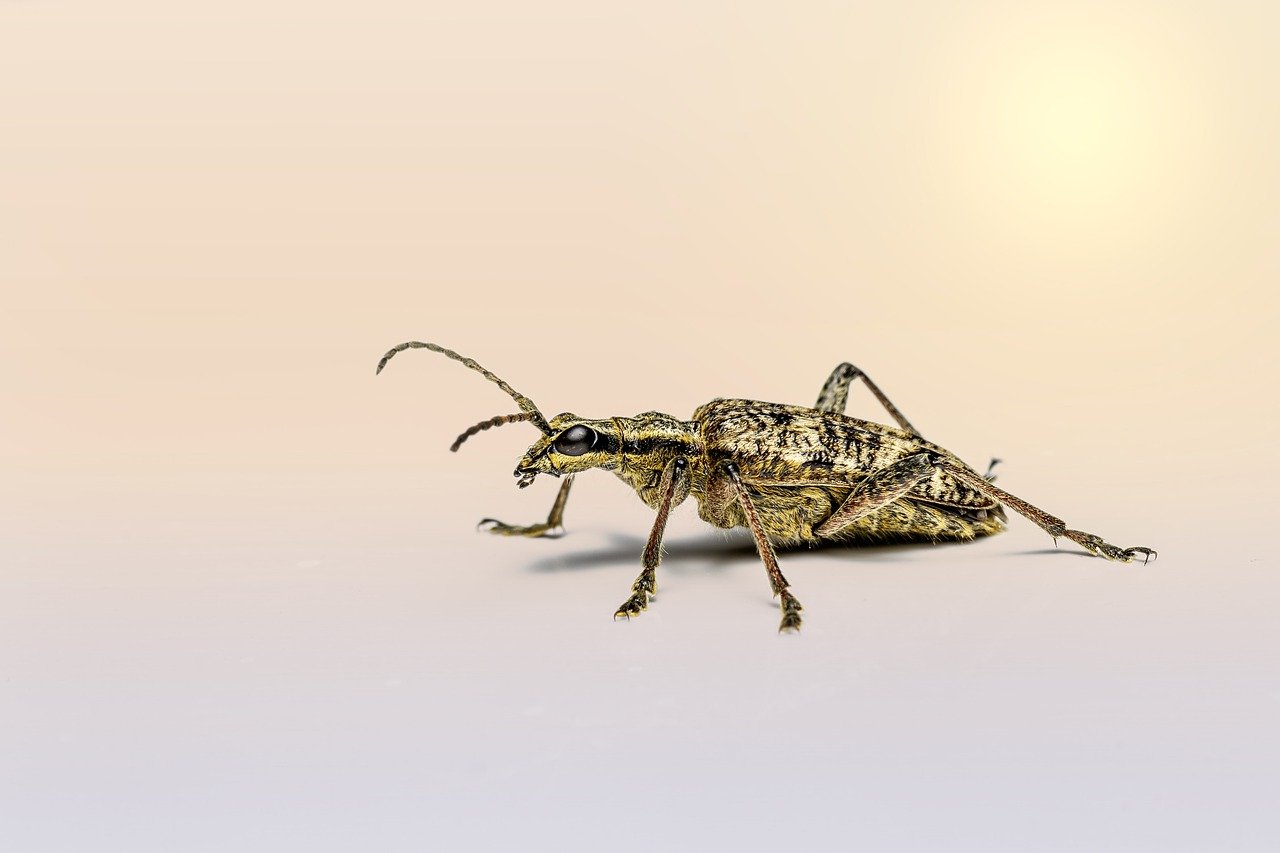The Blackspotted Pliers Support Beetle (Rhagium mordax) is a species of longhorn beetle known for its distinctive markings and its role in decomposing deadwood. It is commonly found across Europe and parts of Asia in various woodland habitats.
Description
- Size:
- Adults typically measure between 12 to 20 millimeters in length.
- Appearance:
- Coloration: The beetle has a dark brown to black body with pale, creamy-yellow spots on its elytra (wing covers). These spots give the beetle its common name, “Blackspotted.”
- Body Shape: The body is elongated and slightly flattened, with a characteristic long pair of antennae that are often longer than the beetle’s body, typical of longhorn beetles.
- Pronotum: The pronotum (the area behind the head) is rounded and has a slightly rough texture with fine punctures.
- Legs: The legs are relatively long and slender, allowing the beetle to move adeptly over bark and through crevices.
Behavior and Ecology
- Habitat:
- Rhagium mordax is primarily found in deciduous and mixed forests, particularly in areas with abundant dead or decaying wood. It is commonly seen on logs, stumps, and fallen trees, which provide food and habitat for its larvae.
- Diet:
- Larvae: The larvae are wood-borers, feeding on decaying hardwoods, especially species like oak, beech, and birch. They create tunnels within the wood as they feed, contributing to the breakdown and decomposition of dead trees.
- Adults: Adult beetles are often seen on flowers, feeding on pollen and nectar, although they primarily emerge in the spring and early summer.
- Life Cycle:
- After mating, females lay eggs in the crevices of decaying wood. The larvae hatch and begin to bore into the wood, where they will spend most of their development. The larval stage can last up to two years, depending on environmental conditions. Once they have matured, they pupate within the wood, eventually emerging as adult beetles in the spring.
Ecological Role
- Decomposition:
- Rhagium mordax plays a crucial role in forest ecosystems by contributing to the decomposition of deadwood. The larvae’s wood-boring activities help to break down and recycle nutrients back into the soil, aiding in forest regeneration.
- Pollination:
- While feeding on flowers, adult beetles may also contribute to the pollination of various plants, although they are not as effective as dedicated pollinators like bees.
Conservation Status
- Distribution:
- The Blackspotted Pliers Support Beetle is widespread across Europe and parts of Asia. It is commonly found in suitable habitats and is not considered endangered.
- Conservation:
- As a species dependent on deadwood, the Blackspotted Pliers Support Beetle benefits from conservation efforts focused on preserving natural woodland habitats and maintaining deadwood in forests. Forestry practices that remove dead trees can negatively impact their populations.
Summary
The Blackspotted Pliers Support Beetle (Rhagium mordax) is an important component of forest ecosystems, contributing to the decomposition of deadwood and the recycling of nutrients. With its distinctive spotted appearance and long antennae, this beetle is easily recognizable and widespread across Europe and parts of Asia. Conservation of natural woodland habitats and the presence of decaying wood are crucial for the continued survival of this and other wood-dependent species.cores the importance of biodiversity conservation efforts.
Views: 567
Subscribe to the newsletter:
